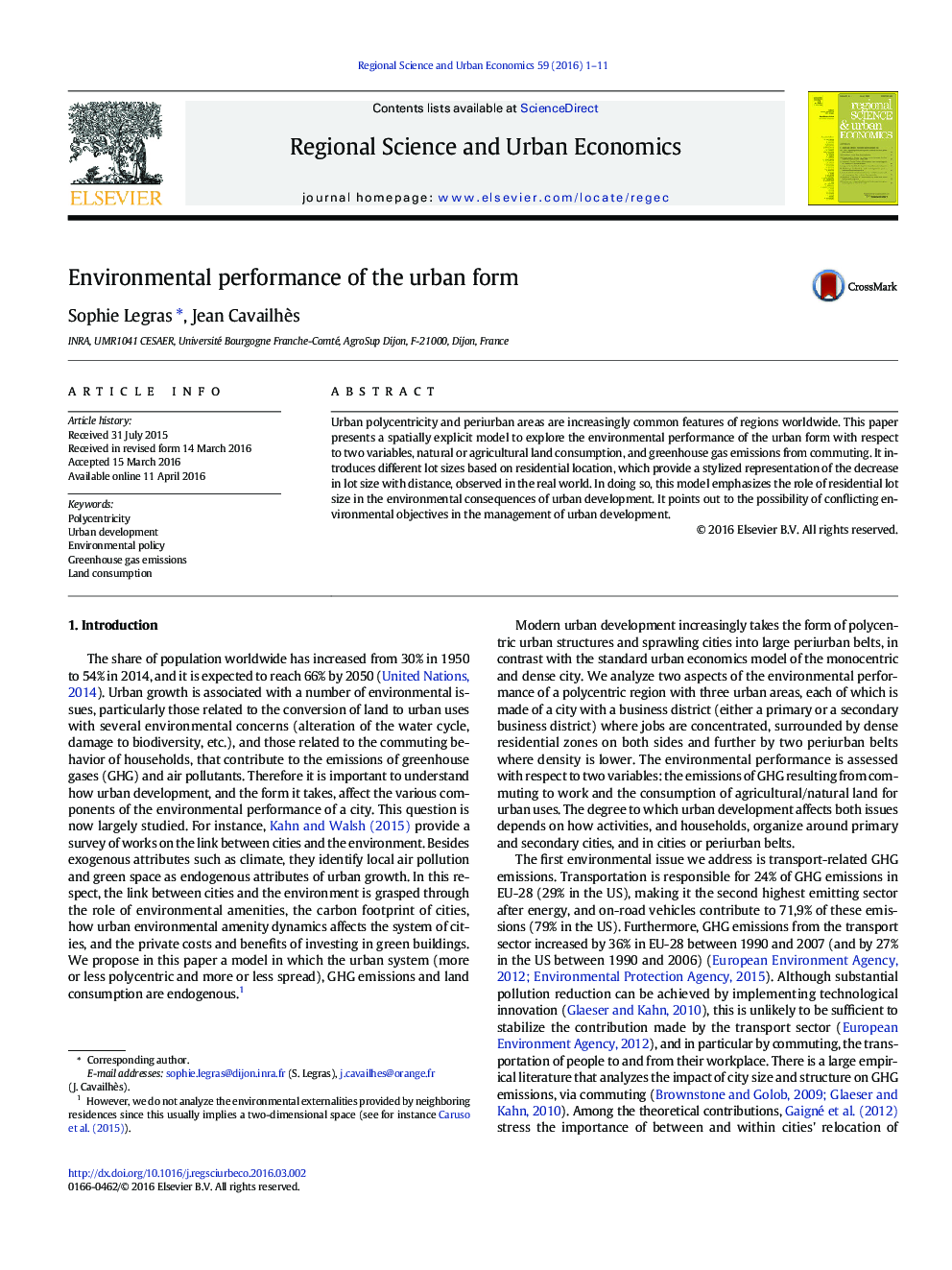| Article ID | Journal | Published Year | Pages | File Type |
|---|---|---|---|---|
| 982964 | Regional Science and Urban Economics | 2016 | 11 Pages |
•We study land consumption and greenhouse gas (GHG) emissions in relation to the urban form.•The polycentricity level and the share of population in cities and periurban belts characterize the urban form.•We study the environmental impact of transport and communication costs, housing lot size and local public goods.•Managing GHG emissions may either come at the expense of increased land consumption or induce a win-win solution.
Urban polycentricity and periurban areas are increasingly common features of regions worldwide. This paper presents a spatially explicit model to explore the environmental performance of the urban form with respect to two variables, natural or agricultural land consumption, and greenhouse gas emissions from commuting. It introduces different lot sizes based on residential location, which provide a stylized representation of the decrease in lot size with distance, observed in the real world. In doing so, this model emphasizes the role of residential lot size in the environmental consequences of urban development. It points out to the possibility of conflicting environmental objectives in the management of urban development.
